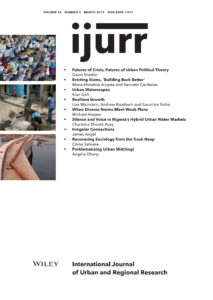Academic and policy literatures on urban climate resilience tend to emphasize ‘good planning’ as the primary means for addressing the growing risk of flooding in Asia’s coastal megacities. Cities have come to rely on disaster and climate resilience plans to future‐proof their landscapes and protect vulnerable populations. Yet while data is collected, models are built and plans are drafted, environmentally destructive development practices continue unabated and often unchallenged. This article examines and seeks to explain the contradictions between a growing awareness of the risks of climate‐induced flooding in resilience plans and the continuation of development practices widely acknowledged to exacerbate those risks. It analyzes these contradictions in the context of Mumbai and Kolkata, India’s largest coastal cities, which are facing the severest threats from climate‐induced flooding. Based on analyses of key resilience planning documents and both planned and unplanned developments in some of Mumbai’s and Kolkata’s most ecologically sensitive areas, our analysis reveals that resilience planning, promoted by the central government and international consultants, and presented in locally produced ‘fantasy plans’, fails to address the risks of climate‐change‐related flooding owing to tendencies to sidestep questions of politics, power and the distributional conflicts that shape urban development. We conclude that efforts to reduce urban flood risk would benefit from the research, methods and analytic concepts used to critically study cities, but significant gaps remain between these fields.
Details
Written by:
Liza Weinstein, Andrew Rumbach & Saumitra Sinha
Digital Object Identifier (DOI)
10.1111/1468-2427.12743
About DOI

